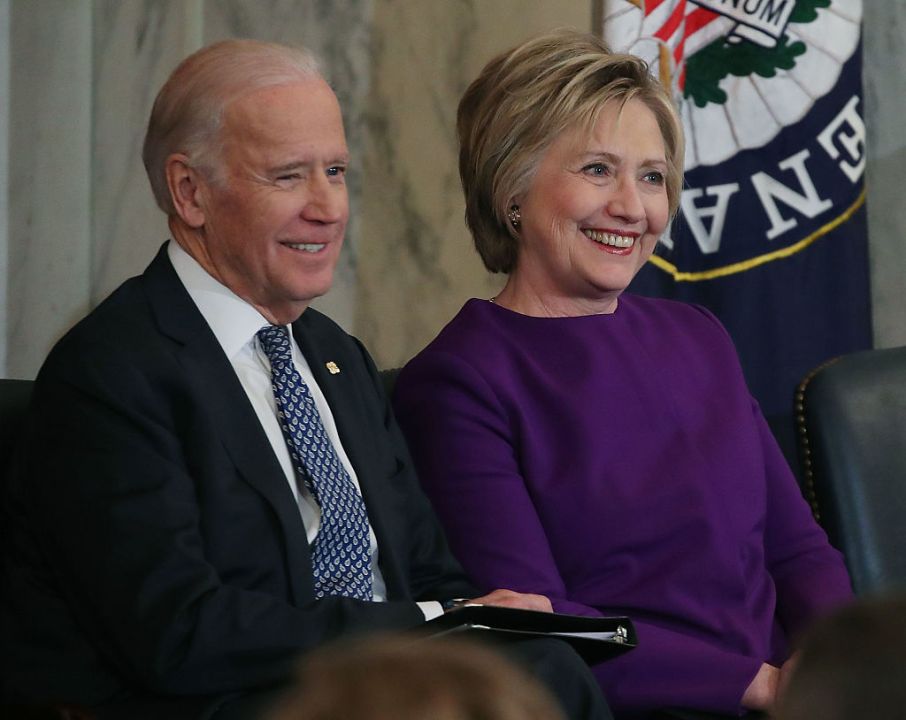In the final week of her presidential campaign, with victory seemingly all but assured, Hillary Clinton visited Arizona – a state that had only once voted Democrat since 1948. The trip was later taken as an example of Clinton’s hubris, after she failed to visit Wisconsin thinking it was in the bag, only to end up losing the state by 0.77 per cent.
In the end, Wisconsin proved to be the ‘tipping point state’ which took Donald Trump past the 270 electoral votes needed to take the White House. Fast-forward four years and you would think that Joe Biden’s campaign would be relentlessly focusing on the three ‘tipping point’ states forecasted to have more than 10 per cent chance of determining the outcome of the US election: Pennsylvania (33 per cent), Florida (13 per cent) and Wisconsin (11 per cent).
The campaign schedules say otherwise. Although both campaigns have made numerous trips to these states, Tuesday saw Joe Biden make two stops down in Georgia, a state that FiveThirtyEight suggests has a 2 per cent chance of deciding the election – and he will be in Iowa on Friday (less than 1 per cent). On the same day, Kamala Harris will visit Texas, which has less than a 2 per cent chance of being the tipping point.
So have Democrats learnt nothing from their 2016 targeting failure? The New York Times’ description of Biden’s Iowa trip as a ‘sign of confidence’ has hints of deja-vu. But there are clearly other considerations at play.
First is the obvious fact that holding an election during a pandemic throws up all kinds of unpredictable factors: how many polling stations will be forced to shut, how many mail-in ballots will arrive too late to be counted, how many will be rejected, and how long counts will take. In Pennsylvania in particular, parties have failed to reach a deal to allow mail-in ballots to be counted quickly. With Donald Trump likely to undermine late counts and go to court to try and preserve his election day lead, it makes sense for the Democrats to attempt to secure as many routes to 270 electoral votes as possible.
It’s also possible to see another strategy. Winning the Presidency is one thing; being able to govern is another. For most of Joe Biden’s 36 years as a Senator, Presidents and members of Congress could reach across the aisle to compromise and get legislation passed. In six of his eight years as Vice President, however, Joe Biden was part of an administration whose agenda was continually halted by a Republican Congress. Compromise with the other side was eroded by the disappearance of liberal Republicans and conservative Democrats in Congress – and the likelihood of a primary challenge for legislators who dared challenge their party’s extremes.
In the modern era, having full control of Congress – as Bill Clinton, Barack Obama and Donald Trump did for just two years – is exponentially more valuable than winning the White House alone. Joe Biden knows that if wants any hope of furthering his ambitious agenda, such as a new Covid stimulus, or a public option in healthcare, or statehood for Washington DC or Supreme Court reform, he will need a Senate majority. Any additional seats he wins now would also buttress against any losses in 2022 and 2024. The Republicans, especially those looking beyond a potential Trump loss, are equally aware of the importance of Congress.
In this light, Biden’s unlikely campaign stops in Iowa and Georgia (which has two Senate seats up for grabs), as well as Jill Biden’s trips to Maine, make far more sense. So too does Trump’s presence in Georgia and Iowa – and Mike Pence’s rally in South Carolina on Tuesday, a state that remains red on a presidential level. These states will not decide who wins the White House, but will define what happens next.
There is a final moving part in this game of three-dimensional chess. At the start of each decade, a new census is used to reapportion the number of congressional districts in each state. Experts expect three to be added to Texas, meaning an eye-dropping 39 seats will have their borders altered. If Republicans retain full control of the state’s government this year, we can expect them to draw a highly favourable and heavily gerrymandered map.
But if Democrats can flip the nine seats they need to take the state house, there will likely have to be a compromise on the electoral map. That’s why Democrats truly care about Texas this year – and why Kamala Harris will be in Houston on Friday, home to several swing state house districts.
In this hyper-partisan age, even Presidential elections can’t just be about Presidential elections.







Comments